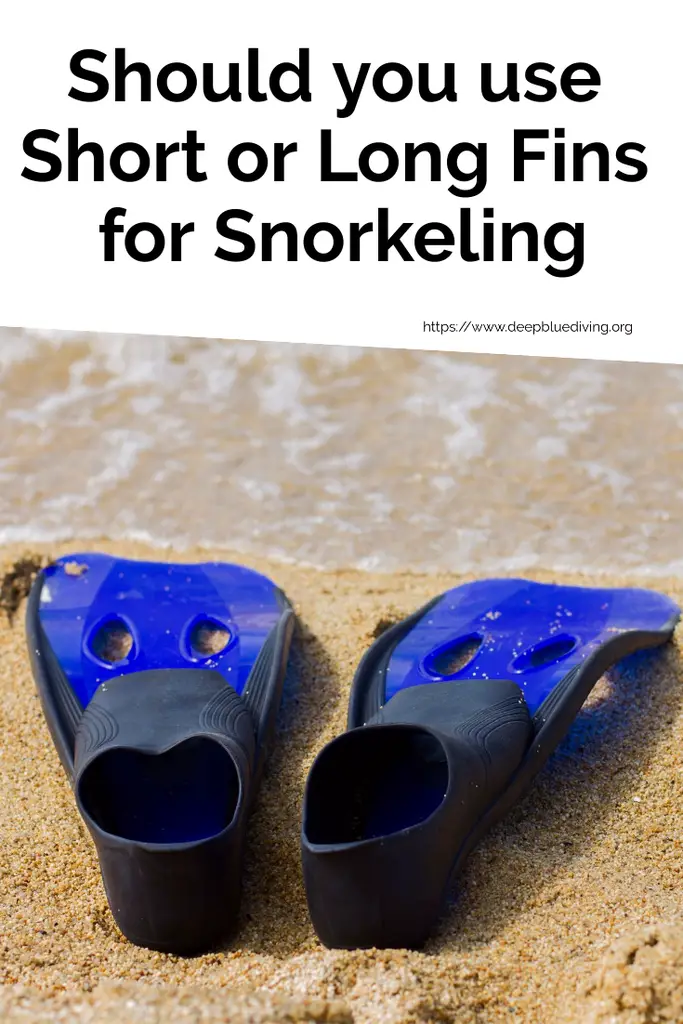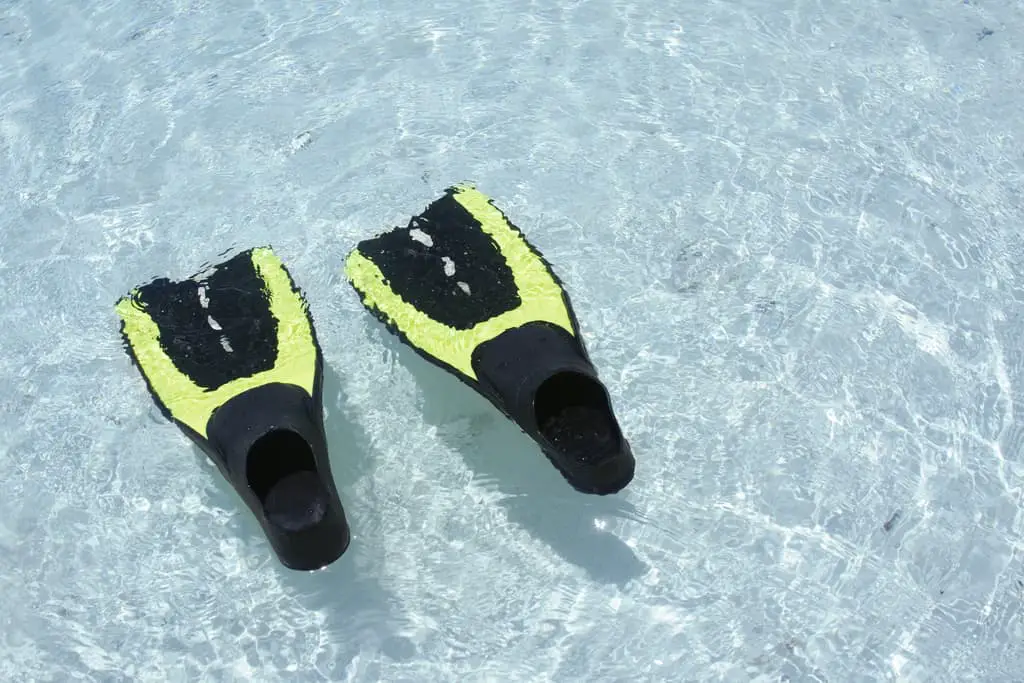Should you use Short or Long Fins for Snorkeling
Whichever sport you play, whether it’s on land or water, you need to have the right equipment. When you’re snorkeling, there are two main items that are important: your snorkeling mask and your fins.
Should you use short or long fins for snorkeling? There’s no absolute and clear answer. Both have advantages and disadvantages. If you’re also diving then long ones are obviously the better choice. If you travel a lot then the short version is easier to deal with.
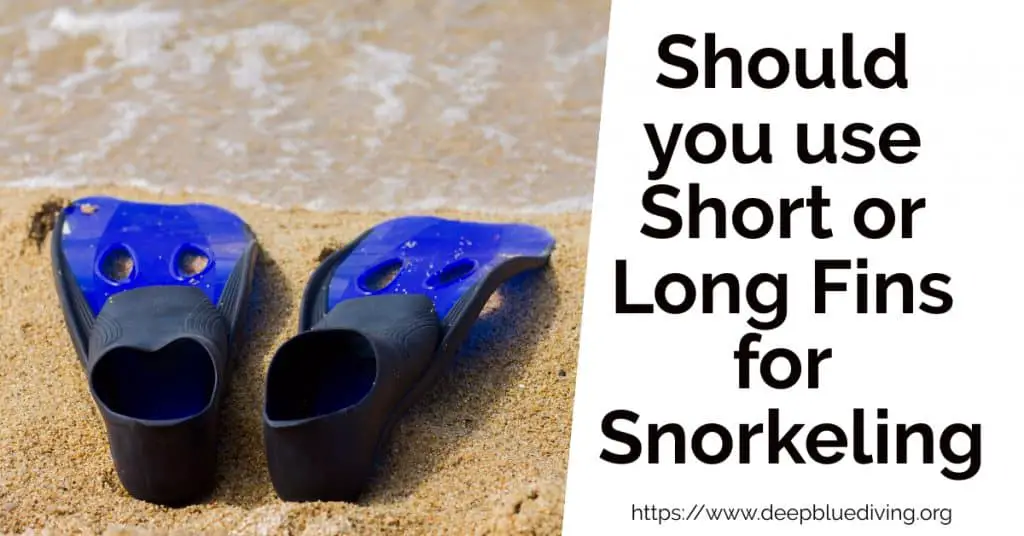
Fins are essential when snorkeling because they help you move more easily through the water and make your snorkeling experience more comfortable.
Snorkeling fins also make it easier for you to maneuver and change your direction in the water. One question that many people is whether short fins are better or long ones.
Short or Long – The only choices?
For the longest time all snorkeling fins where long fins. When snorkeling became more popular and travel got involved, short fins arrived at the scene and started to compete with the traditional longer fins.
Nowadays, you also can pick ultra-long fins for freediving as well as split fins for scuba diving and snorkeling. It somewhat gets confusing which you should pick.
For snorkeling you can pick from three different varieties:
- Short Fins
- Long Fins
- Split Fins
We’ll have a closer look in the sections below to help you understand whether short fins or long ones or any other type of fins fits your style of snorkeling.
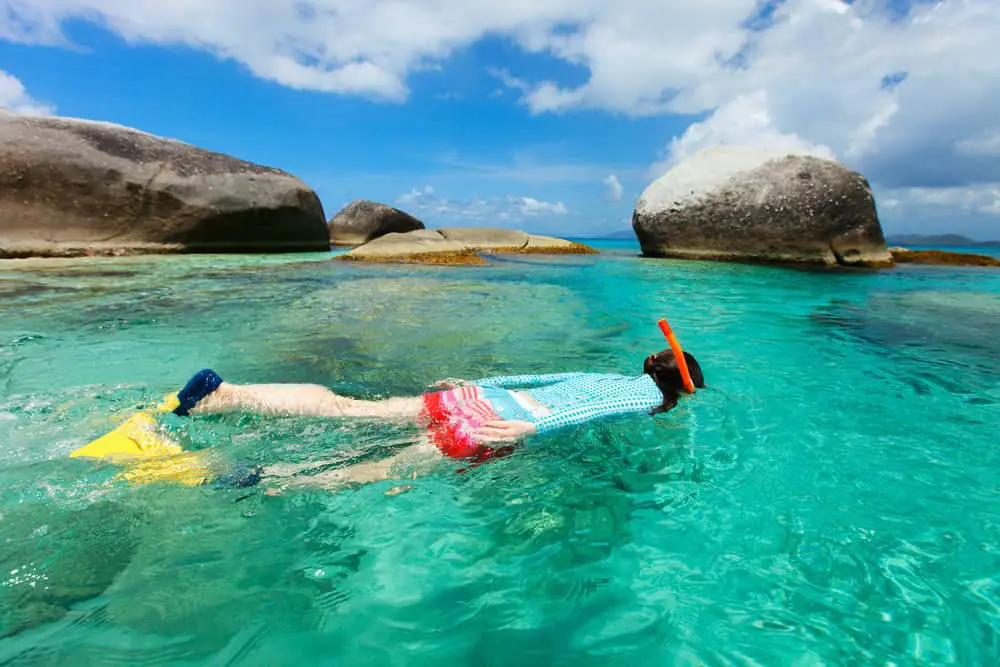
Finding the Best Snorkeling Set – Check our reviews and recommendations!
Differences between Long & Short Fins
Let’s start off with the basic functions of short fins vs long snorkeling fins.
Long Fins
Long fins have a bigger blade at the end and require you to put in more force in order to move forward. However, longer fins propel you through the water and you can cross longer distances with them.
Trickier to master – More Thrust
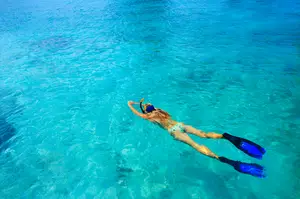
They can be a bit tricky to use though if you’ve never snorkeled with them before. It becomes difficult to avoid hitting other snorkelers and corals.
It is important to note that the choice of using or not using long fins is only for snorkelers. A scuba diver generally always requires long fins to combat water pressure at depth.
Short Fins
Short fins allow you to cover distances more quickly and are more versatile because they are suitable for confined spaces like pools as well as the ocean. Shorter fins are typically more suitable for muscle training and swimming but can also be used for snorkeling.
Need more kicks with a short blade
Since you don’t cover long distances with a single kick, you need to flap your legs more to move through the water when you use such a pair of fins. The plus side is that it’s easier for you to change your direction. Another advantage is that they are smaller and hence are much easier to take with you on travels.
Making the Decision
Long fins push back more water and help you cover a longer distance. However, one kick with long fins is much more exhausting than that with short fins.
On the other hand, short fins help you move faster, but to cross long distances, you need to exert more effort which can reduce your stamina. You have to perform almost double the number of kicks with short fins which means that most of your energy is used up just in kicking and maneuvering through the water.
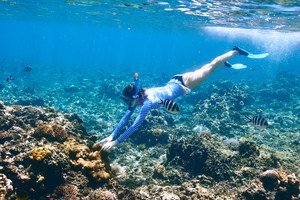
Some people complain about the fact that long fins graze through corals and reef when they are snorkeling. However, the solution to this problem is not to use shorter fins, but to improve your technique of moving through the water and using your pair of fins. The tips of your feet/ fins shouldn’t be facing downwards, they should be facing backward which will help you avoid hitting reef with your feet and also propel you forward.
Easier floating with long fins
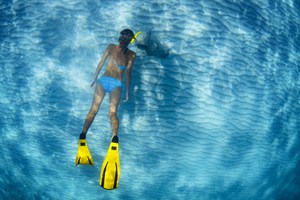
Some divers prefer long fins because you can float in one spot and observe the sea creatures without having to move your feet around too much. Excessive movement of your feet and fins can scare the fish away.
Long flippers are generally more flexible, but over time, the blade becomes stretched out and the fins need to be replaced. Short fins have a smaller, stiffer blade and are likely to last much longer.
Short fins can be easier to enter into the water
Regardless of whether you opt for short or long fins, it is tricky to get from the shore to the water. A long fin tends to be more troublesome. In order to avoid tripping over the pair of fins, it is recommended to walk backward till you reach the water. This is also advisable for short fins because the awkward angle of walking forward can damage your fins even if you don’t topple over.
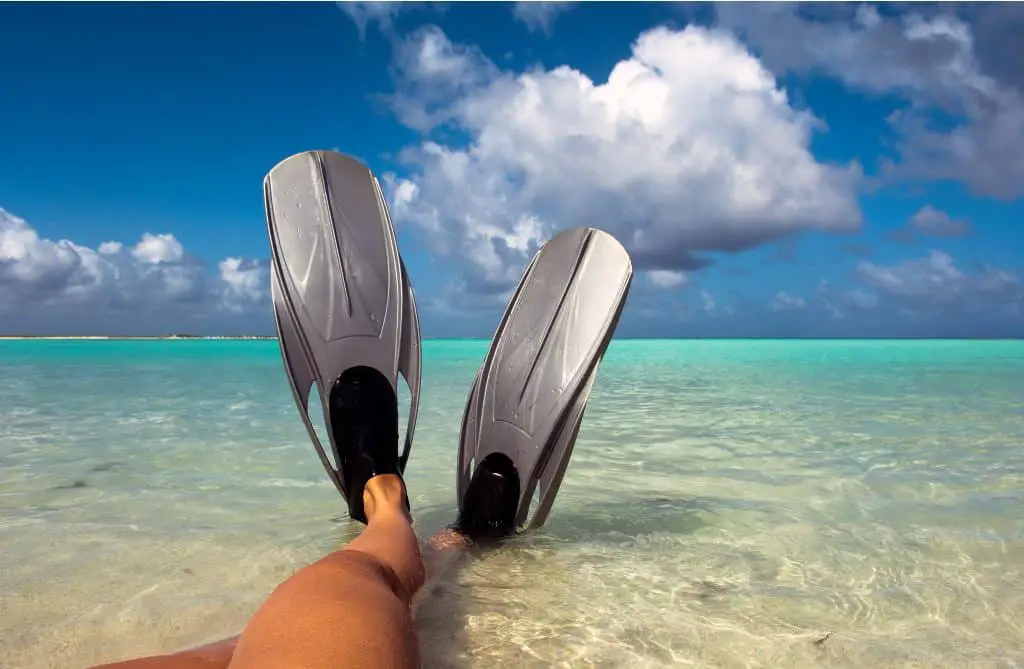
The Verdict
Each type of fin and blade has its advantages. Keep in mind that a short paddle will only be useful for swimming or snorkeling. Longer fins can additionally be used for diving!
Long Blades
Long bladed fins are great for novices and basic level swimmers because they’re more comfortable and flexible and allow you to float in one place while you catch your breath. Another advantage of long blade fins is that they produce more thrust which lets you glide faster through the water compared to short snorkeling fins.
A long fin makes it harder though to get into the water when you have to wade in from shore. An advantage of a longer fin is that it can double up for scuba diving which you can’t do with shorter fins that are intended as snorkeling fins.
Short Blades
Many snorkelers opt for short fins vs long ones because the movement of your feet is similar to swimming without any fins. It’s sort of like having all the benefits of using long snorkel fins without the disadvantages.
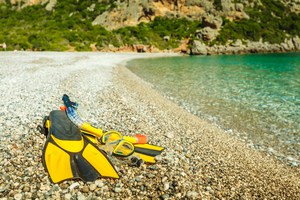
It does take a level of practice to snorkel with short fins in such a way that you have a comfortable snorkeling experience without running out of breath.
Short fins are helpful for strength training, increasing flexibility, and developing control over your movement in the water. If you’re looking for a more relaxing experience where you just hover in the water and observe the sea creatures, long fins are ideal.
A short fin has one other advantage. They are much better travel fins when you’re looking at short fins or long ones. The shorter blade makes it a lot easier to pack them.
Are Split Fins a Good Option?
Recently, people have considered the use of short split fins for snorkeling. They provide more power and thrust as you move through the water and are preferred by some divers over the standard longer fins.
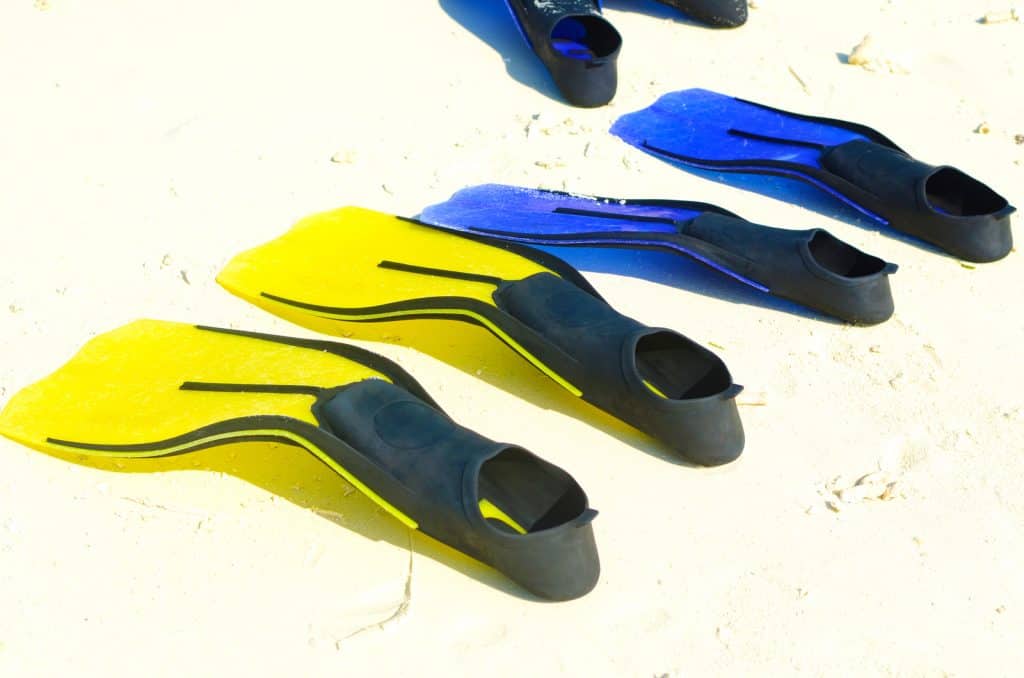
Snorkeling while Pregnant – What do you have to think about?
Can you Snorkel without Fins?
Many people like the idea of snorkeling without using any fins, but this is highly unadvisable. Fins act as support in case there’s a strong current or you suddenly experience fatigue midway and find yourself unable to kick your feet.
Snorkel fins are not just a means for you to move faster and more comfortably through the water, they also double as a floating mechanism. If you’re out of breath and tired and need to stop, or just want to observe the ocean in a specific spot for a while, you can float in the water without kicking with the help of your fins.
How much faster do fins make you?
Fins definitely allow you to swim faster. How much speed improvement you’ll experience will depend on how well you use the fins.
Some snorkelers and swimmers hold their feet and fins to high and they are out of the water for a good time of the kick. At that time you obviously won’t get any speed improvement.
However, if you use good technique for your kicks and leverage the increased size to propel you forward then you can easily see improvements of 30% or even more.
Open-Heel vs Full-Foot Fins for Snorkeling
You can find both types of fins when you’re looking for snorkeling flippers. Full-foot fins are usually the better choice when you snorkel in warm water. You wear these types like a shoe and slide them on while you’re barefoot.
Snorkel fins with open heels work better in cold water. You will usually wear booties with this type. You can use the heel strap to loosen or tighten around your foot making these adjustable fins. They come with the same pros and cons as you have when you look at fins for scuba diving.
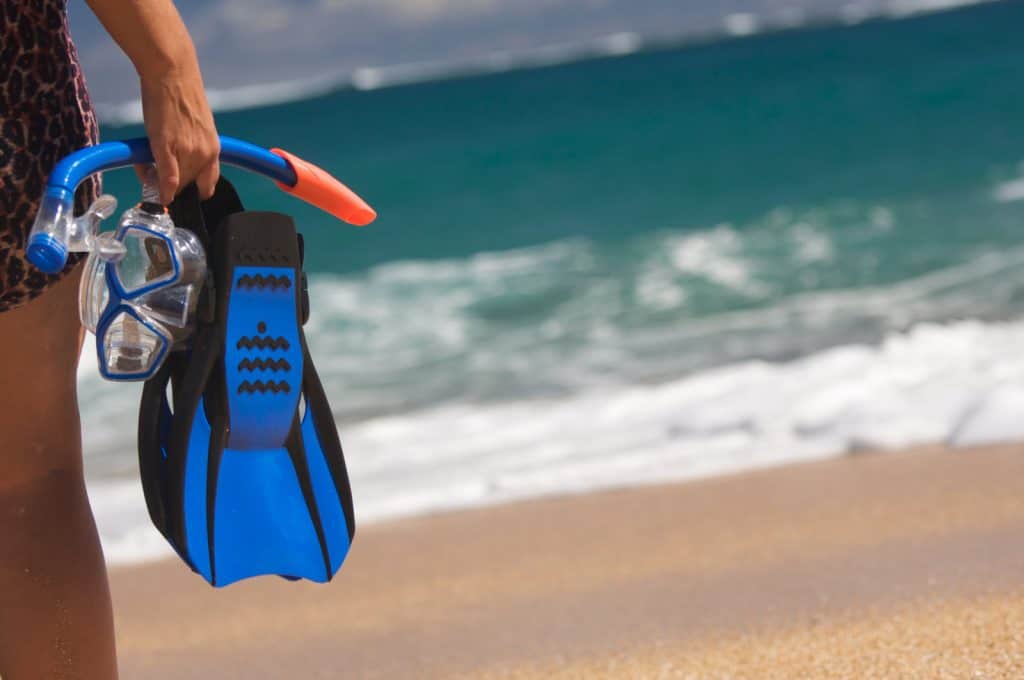
Final Thoughts
This isn’t really a one size fits all situation. There’s no one particular type of fin that works for all swimmers and snorkelers.
Some swimmers and snorkelers are more comfortable in long bladed fins, others prefer short ones and there are others who experiment with split fins. The type of usage, including whether you’re swimming in the ocean or a pool and whether it’s for leisure or for strength building purposes will be used to determine whether you use a longer fin or a short fin.
If you’re a beginner, seek help from a snorkeling instructor who will help you figure out which fin is better for you.
